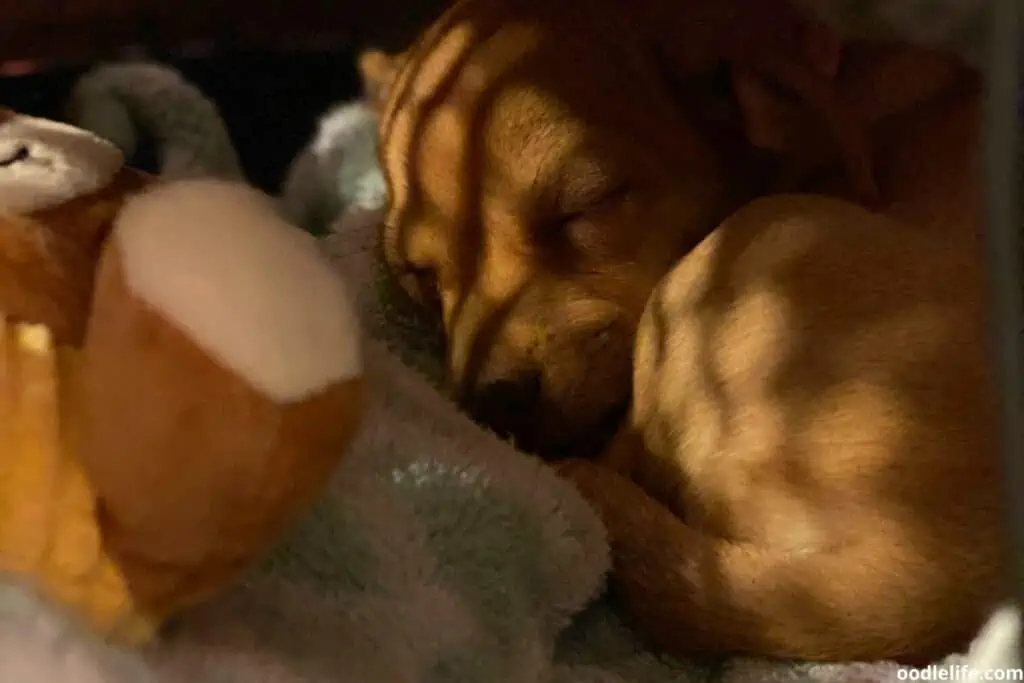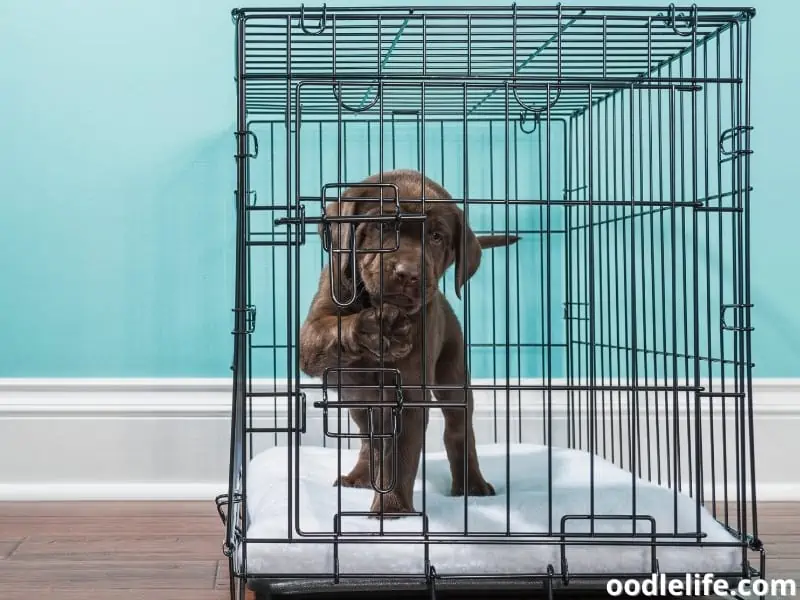How to Make a Crate Training Puppy Schedule?
So you’ve just brought home a furry addition to your family–congratulations! You’re in for a whirlwind of fun, fur, and emotion.
You probably also have a million questions about how and when to train your new dog. Today, we’ll cover one of the most important aspects of training: crate training.

Whether your new family member is a puppy or an older dog, a crate can be a powerful tool. You can use it to help with potty training, settling, and teething. It’s also a great way to establish a routine with your dog.
What Is Crate Training?
Many people refuse to crate train their dog because they think that putting a dog in a “cage” is cruel. This is a common misconception.
Above all else, dogs love routine. They want to know what’s going to happen and when. They want to know where things are and that they’ll always be there.
They want to know that there is a space they can go to that’s safe.
A crate is more like a den than a cage. It’s a safe, comfortable space that your dog knows is just for her. If the crate is big enough and you’ve properly acclimated her to it, there’s no reason for crating to be cruel.
You don’t even have to use a typical crate. If the idea of putting your dog in a “cage” makes you uncomfortable, use an X-pen or even a small room instead. Just make sure the space is secure and comfortable and that it doesn’t have anything in it that will get your dog into trouble.

Tips for Successful Crate Training
Every Dog Is Different
This is the most important thing to remember when crate training. Some dogs will love their crates immediately. Others will take longer to warm up to them.
Monitor your dog’s behavior closely and be willing to change your approach or take a break if she seems stressed or unhappy.

Make the Crate Great!
Your dog should enjoy being in her crate. Make it super comfortable. It must be big enough for her to sit, stand and lie down.
Feed her all her meals in the crate. Put her favorite toys or chews in it so she has something to do while she’s in there.
Your dog should not be able to get into trouble in her crate! Apart from the things mentioned above, there should be nothing else in the crate.

Baby Steps
Never throw your dog into the crate and shut the door. Acclimating her to it is part of the process. Always take things slowly and make sure your dog is comfortable at every step before proceeding to the next step.
Crate Training Steps
Step Zero: Set Up the Crate
This process starts before you bring your dog home. Choose an area of your home for the crate. Make sure it’s a spot that you won’t mind having the crate in for a while–you shouldn’t move the crate once your dog knows where it is.
The spot should be quiet, cool, and out of the way. A separate room is great, but if that’s not possible, then the quietest corner of the family room or bedroom is good too. If you plan to crate your dog overnight, the bedroom is a good choice.
Your dog will be more comfortable staying in the same room with you, and you can be close by the take her for potty breaks.
Put your dog’s bed, food, water, and some toys in the crate.
Step One: Introduce Your Dog to the Crate

When you bring your dog home, leave the crate door open. Don’t force your dog into the crate. Just let her explore it in her own time.
If there’s a comfortable bed and some fun toys in there, chances are she’ll go in on her own.
If she shows no interest in it, try tossing treats into the crate so she has to go inside to get them.
Step Two: Create a Cue
A good cue is something like “in your crate!” or “on your bed!” or “go to your crate!” If you’re feeding meals in the crate (which is a great idea), start saying this before you put her food in at mealtimes.
To use the cue outside of mealtimes, toss a few treats into the crate as you say it. Do this a few times a day for a few days. Once she’s consistently going inside on the cue, stop throwing treats and just use your arm to gesture. If she goes into the crate, reward her with a treat.
Step Three: Close the Door
A great time to first do this is after a nice long walk or play session when she’s tired out. You could also do it in the evening after dinner when everyone else in the household is settling down to watch TV, read, or what have you.
Make sure your dog has pottied and been fed before she gets shut-in. Stay within view so she doesn’t feel abandoned or develop separation anxiety. Give her a puzzle toy or a chew to distract her. Don’t shut her in for too long the first few times, if possible.
Twenty minutes to an hour is a good place to start.
If she whines or barks, ignore her. Let her out once she’s quiet. She should learn that you decide when she comes out, not her.
Step Four: Leave Her Overnight
Ideally, you should practice steps two and three a few times throughout the day before trying to shut her in overnight.
When you do shut her in overnight, make sure that she’s good and tired, happily fed, and has pottied. Stay within view if possible. Give her some toys.
Don’t respond to any whining or barking.
If you have a young puppy, she will need bathroom breaks throughout the night, so be prepared to get up for those. The golden rule to follow is that a puppy can hold her bladder for her age in months plus one. So an eight-week-old puppy can hold her bladder for three hours.
Example Crate Training Schedule
Here’s a breakdown of what a day of crate training might look like for your puppy.
6:00 – 12:00 pm: Let your puppy out to potty first thing. Feed her breakfast in the crate, then do a good walk and another potty break. Put her down for a nap in the crate.
12:00 pm – 6:00 pm: Repeat the morning process. Let her out to potty, feed her lunch in the crate, take her for a quick walk or some playtime, then naptime in her crate.
6:00 pm – 9:00 pm: Feed her dinner in the crate, then take her out for her last walk. Do some playtime or training to tire her out (playtime in the crate is great!)
9:00 pm: Your 12-week old puppy should be able to hold her bladder for about 5 hours. Remember to set an alarm to take her out. Always put her back in the crate calmly after the potty break.

Final Tips
Crate training can feel like a daunting task, but it doesn’t have to be! Make going into the crate a game. Use lots of treats and positive reinforcement.
Stay consistent, be patient, and most importantly, have fun! Your new pup will be loving her crate in no time.